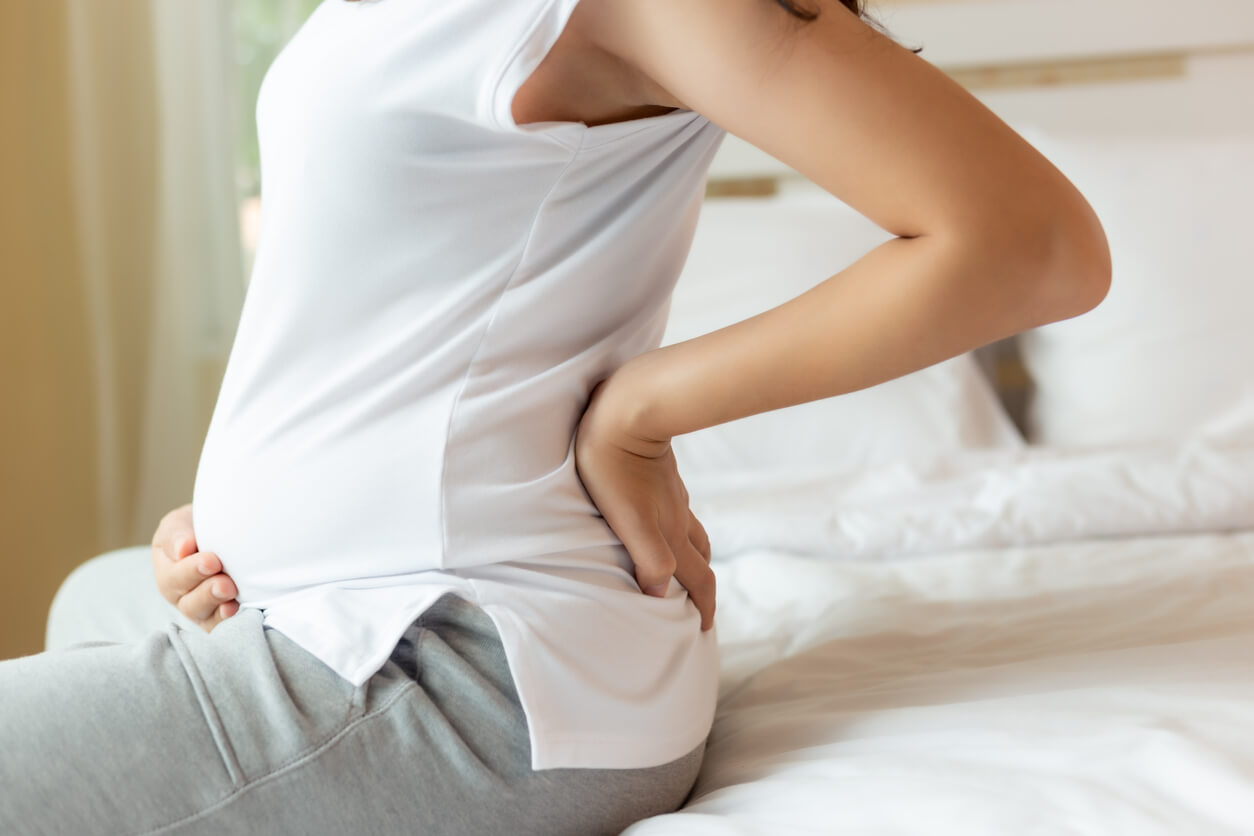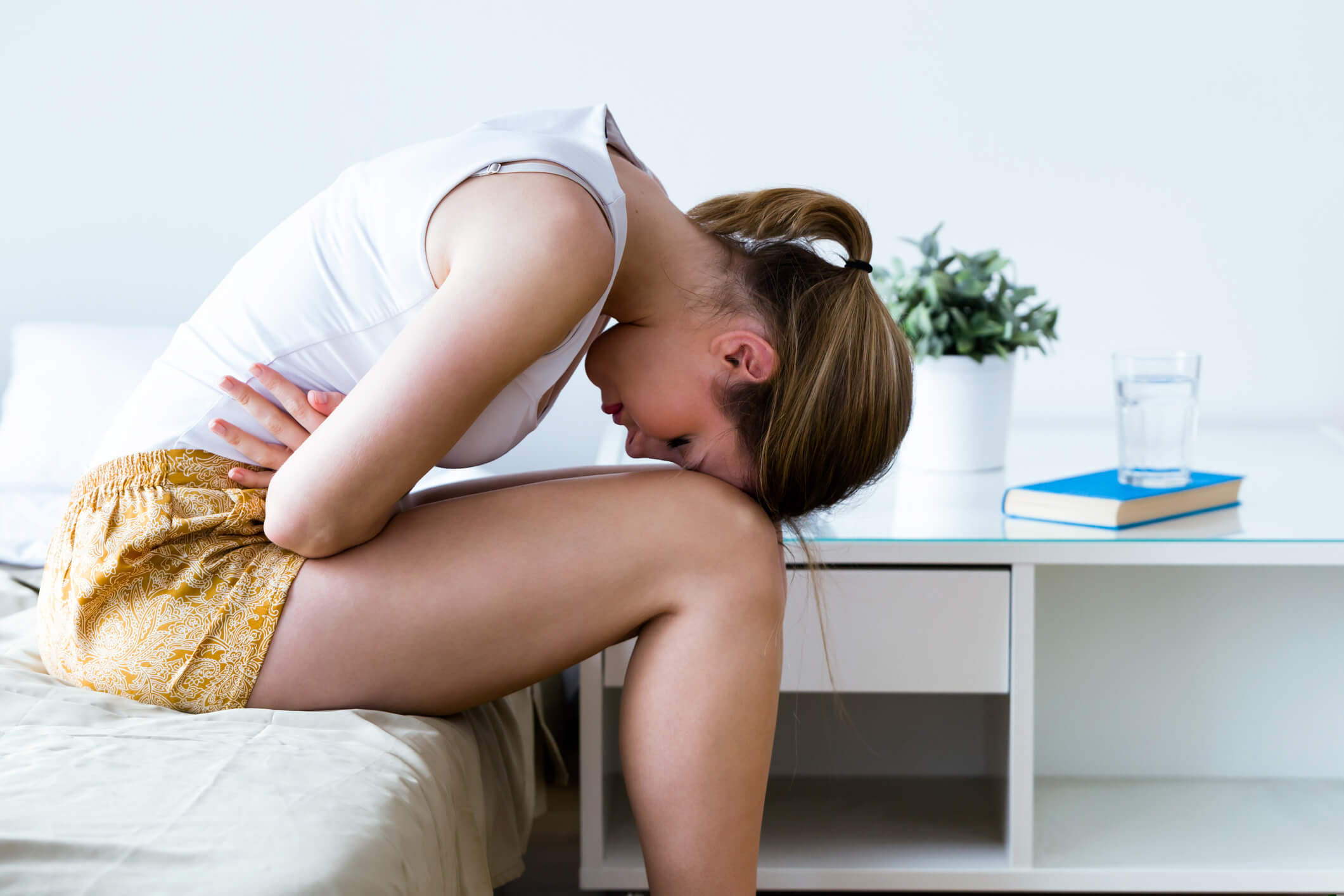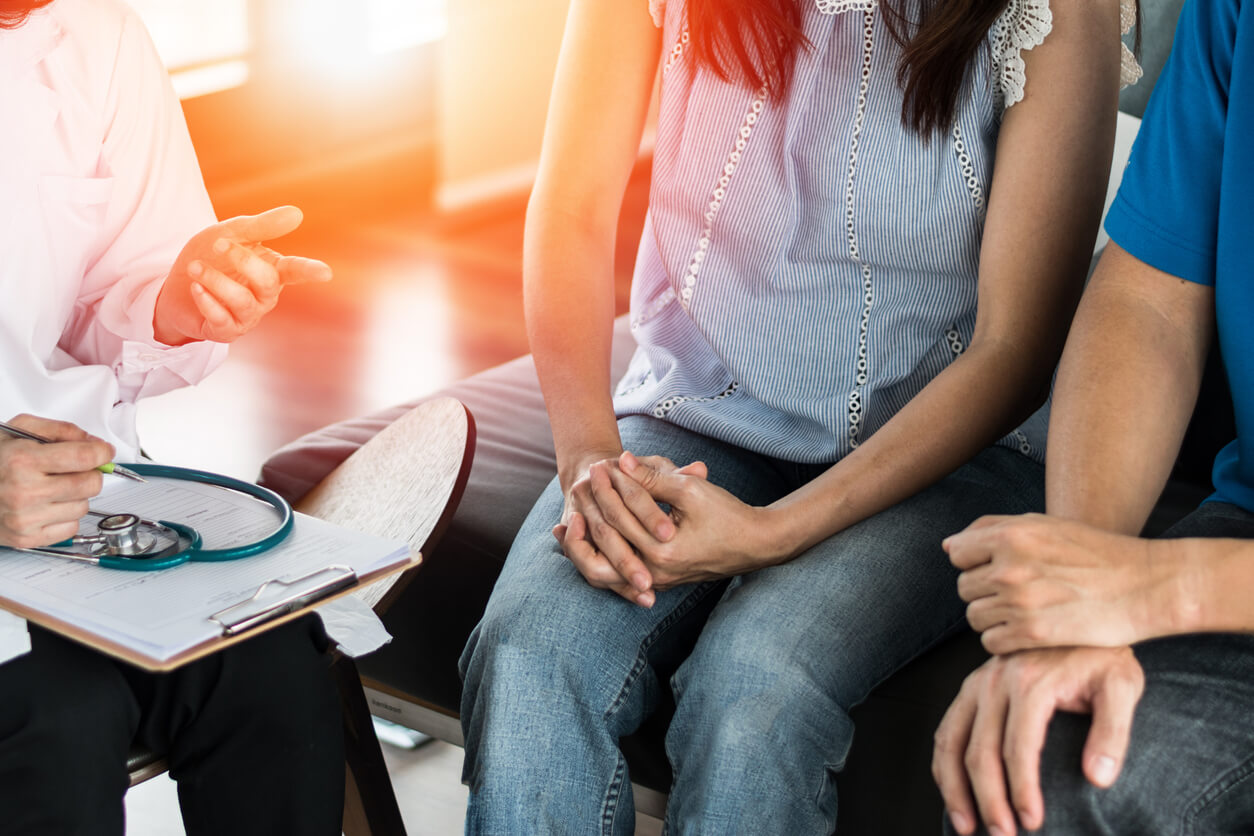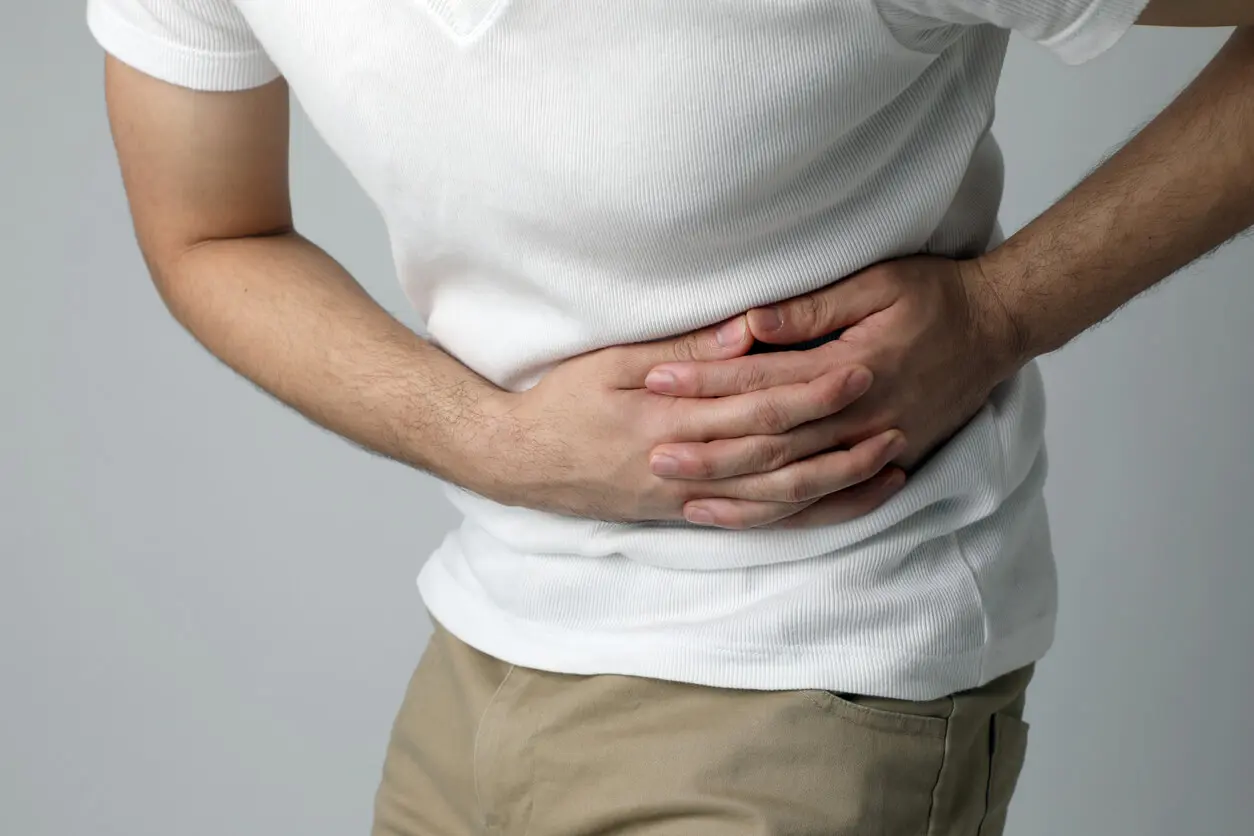Lower Right Back Pain: Causes and Treatment
Understanding the causes of lower right back pain and how to treat them
Lower back pain on the right side stems from various causes and underlying conditions. Determining the origin of the pain, whether it be spinal misalignment, ligament sprain, or organ dysfunction, is crucial for treatment. Low back pain is the leading cause of disability globally and can seriously affect your daily activities and quality of life.
In this blog article, we will detail some of the most common causes of lower right back pain and how to treat the root of the problem.
Causes of lower right back pain
Every year, low back pain affects nearly 619 million people worldwide. The causes of low back pain are almost as many. Musculoskeletal injury, chronic health conditions, and nerve damage can cause inflammation and pain in the back.
The conditions listed below may only affect the right side of the back. However, many of these issues—with the exception of appendicitis—can also affect the lower left part of the back or both sides of the back at once.
Back muscle strain
Back pain is often caused by injury or strain to the back muscles. We use our lower back for many daily movements, such as bending over and twisting.
Problems that may cause muscle strain include:
Muscle Overuse: Excessive or repetitive use of the back muscles, such as lifting heavy objects or performing strenuous activities, can strain the muscles, leading to pain. Jobs or activities that require repetitive motions involving the lower right back, such as twisting or bending, can also contribute to muscle strain and discomfort in that area. On the other hand, insufficient physical conditioning and weak core muscles can make the back more susceptible to strain and pain.
Poor Posture: Maintaining improper posture, such as slouching or sitting for extended periods without proper lumbar support, can strain the back muscles, leading to lower right back pain. Sitting without breaks or good lumbar support can also lead to muscle fatigue and strain in the lower right back.
Muscle Imbalance: Muscle imbalances in the back, where some muscles are weaker or tighter than others, can result in excessive stress on specific areas, including the lower right back.
Muscle Spasms: Muscle spasms in the back, triggered by strain or irritation, can cause localized pain in the lower right back.
Aging and Degeneration: As individuals age, the muscles in the back may weaken, and the intervertebral discs may degenerate, increasing the risk of muscle strain and lower right back pain.
Ligament damage
Ligaments, which provide spinal stability by connecting bone to bone, can lead to lower right back pain when subjected to stress or injury. Trauma from car accidents or falls can stretch or tear these ligaments, causing significant pain and potential instability. Repetitive strain, common in athletes or physically demanding jobs, can gradually weaken ligaments. Poor posture and biomechanics also contribute to soft tissue and ligament strain by placing undue stress on the lower right back. Ligament injuries can range from mild discomfort to severe chronic pain, with long-term implications for spinal stability.
Spinal stenosis
Spinal stenosis is a condition marked by the narrowing of the spinal canal, which houses the spinal cord and nerve roots, often occurring in the lower back. This narrowing can compress nerve roots on the right side of the spine, causing radiating pain down the right leg (sciatica), including sharp, tingling sensations, and worsens with specific movements or prolonged standing. Weakness, numbness, and a "pins and needles" sensation may also accompany the pain. Spinal stenosis tends to develop gradually with age, as the spinal canal naturally narrows due to arthritis, thickened ligaments, or bone spur growth.
Radiculopathy
Radiculopathy is a condition marked by the compression or irritation of a spinal nerve root, often causing significant lower right back pain. It commonly results from underlying spinal issues like herniated discs, spinal stenosis, or degenerative disc disease, which compress nerve roots in the lower back. This compression leads to localized pain in the lower right back, radiating discomfort, numbness, tingling, and weakness that can extend down the right buttock, thigh, calf, and foot, as well as incontinence.
Ankylosing spondylitis
Ankylosing spondylitis is a chronic inflammatory condition primarily affecting the spine, part of a group of diseases known as spondyloarthritis. It typically causes inflammation in the sacroiliac and vertebral joints, leading to structural changes such as vertebrae fusion. Early stages may involve lower right back pain and stiffness, especially in the morning or after inactivity. Over time, persistent inflammation and fusion, often starting in the lower back, lead to chronic lower right back pain and a hunched posture due to reduced spinal flexibility.
Spinal tumors
Tumors, whether benign or cancerous, can cause lower right back pain when they exert pressure or invade the surrounding tissues in the area. Tumors originating in the spine or nearby structures, such as the kidneys or abdominal organs, can compress spinal nerves or spinal cord segments, leading to severe pain in the lower right back. This pain is often chronic and may worsen as the tumor grows or spreads.
Herniated disc
The spine consists of vertebrae separated by intervertebral discs, which provide flexibility and act as cushions. A herniated disc occurs when the soft inner core protrudes through the tough outer layer, leading to irritation or compression of nearby spinal nerves. When this happens in the lower right back, it can result in localized and radiating pain. A herniated disc pressing on a nerve root in the right lumbar spine can cause lower right back pain that may extend down the right leg, with varying intensity from mild discomfort to severe, debilitating pain.
Kidney problems
Kidney problems, such as renal colic, can lead to lower right back pain. Renal colic occurs when there is a blockage in the urinary tract, often caused by the passage of a kidney stone. These stones can form in the kidneys and then travel down the ureter, which connects the kidney to the bladder. When a stone becomes lodged or stuck along the path, it can cause intense and sharp lower right back pain on the affected side. This pain may come in waves and can be associated with other symptoms like urinary urgency, frequent urination, and blood in the urine.
In addition to renal colic, kidney infections or diseases such as pyelonephritis or polycystic kidney disease can lead to lower right back pain. Infections or inflammation of the kidney can cause localized pain in the lower back, typically on one side. The pain is often accompanied by other symptoms like fever, chills, nausea, and discomfort during urination.
If you experience severe lower right back pain or back pain occurring with other potent symptoms, seeking medical attention is crucial, as kidney issues can have serious implications.
Internal organ problems
Internal organ problems like ulcerative colitis can lead to lower right back pain due to the inflammatory processes and associated complications they trigger. In the case of ulcerative colitis, an inflammatory bowel disease affecting the large intestine, inflammation can radiate pain to the lower right back. Complications such as kidney inflammation or kidney stones, more common in individuals with ulcerative colitis, can also cause pain on the right side of the back. The pain may vary in intensity and may be accompanied by other symptoms like cramping, changes in bowel habits, and fever.
Appendicitis
Appendicitis, an inflammation of the appendix located in the lower right abdomen, is primarily known for sharp pain that starts near the belly button and moves to the lower right abdomen. However, it can also cause right-sided back pain due to irritation of nearby nerves. Typically, this lower right back pain is an additional symptom and may be dull or aching, often accompanied by nausea, vomiting, loss of appetite, and fever. Appendicitis is a medical emergency, and immediate attention is crucial. Delaying treatment can lead to a ruptured appendix, posing life-threatening risks due to the release of infected material into the abdominal cavity.
Lower right back pain in women
Along with the many causes listed above, some sex-specific causes of right-sided back pain affect only women.
Pelvic inflammatory disease
Pelvic inflammatory disease (PID) is an infection of the female reproductive organs, often resulting from sexually transmitted infections (STIs) like chlamydia or gonorrhea. While PID primarily affects the pelvis, it can also cause lower right back pain. This occurs because the infection and inflammation can spread to nearby structures, including the ligaments and tissues that support the uterus and pelvic organs. When these structures become irritated or inflamed, it can lead to referred pain that may radiate to the lower right back. Lower right back pain, in this context, is usually accompanied by other pelvic symptoms such as abdominal pain, fever, abnormal vaginal discharge, and painful urination.
Endometriosis
Endometriosis is a chronic medical condition in which tissue similar to the lining of the uterus (endometrium) grows outside the uterus, often on the pelvic organs and tissues. This condition can lead to lower right back pain when endometrial tissue implants or lesions form in the pelvis, particularly near the ligaments that support the uterus. These implants can cause inflammation, scarring, and adhesions in the pelvic region, resulting in referred pain to the lower right back. This pain is typically cyclical and may worsen during menstruation. Endometriosis-related lower right back pain is often accompanied by other symptoms such as pelvic pain, painful menstrual periods, and discomfort during intercourse.
Uterine fibroids
Uterine fibroids are noncancerous growths of the uterine muscle that can lead to lower right back pain when they grow large or are located near the back of the uterus. As these fibroids increase in size, they can exert pressure on surrounding structures, including the nerves in the lower back and pelvic region. This pressure can result in referred pain, discomfort, or aching sensations in the lower right back. Uterine fibroids can also cause heavy menstrual bleeding and pelvic pain, which may exacerbate lower back pain.
Pregnancy
Pregnancy can lead to lower right back pain due to the physical changes that occur as a woman's body accommodates the growing fetus. As the uterus expands during pregnancy, it can put increased pressure on the lower back and adjacent structures, including the lower right side. Hormonal changes also affect the ligaments and muscles in the pelvic region, potentially leading to increased lower back pain.
Lower right back pain in men
Just as there are specific causes of lower right back pain in women, men may experience this symptom due to anatomically specific medical conditions.
Testicular torsion
Testicular torsion is a urological emergency where the spermatic cord that supplies blood to the testicle becomes twisted, cutting off blood flow to the testicle. While the primary symptom is severe testicular pain, this condition can also cause pain in the lower back and lower abdomen. The pain occurs because the nerves that transmit sensations from the testicles also connect to the lower abdomen and back. Testicular torsion is a critical condition requiring immediate medical attention, as delayed treatment can lead to testicular damage and loss.
Treatment options for lower right back pain
Lower right back pain that is only causing mild to moderate symptoms can usually be treated with over-the-counter medication and self-care.
Medication
Pain Relievers: Over-the-counter pain medication like ibuprofen, acetaminophen, or naproxen sodium (Aleve) can help reduce inflammation and relieve back pain. A doctor may prescribe stronger NSAIDs for more severe cases, but long-term use can have side effects. The doctor will guide the dosage and duration of prescription pain medication to minimize potential risks.
Creams or Ointments: Topical OTC medications, usually lidocaine or capsaicin, can be applied directly to the affected area for pain relief. You can find these medicines as creams, ointments, sprays, or patches; many can be purchased without a prescription.
Self-care strategies
In addition to OTC medication, you can relieve pain and speed up recovery by employing various self-care methods for your lower back.
Some self-care techniques include:
- Rest and avoid activities that worsen the pain, though some activity is beneficial.
- Apply ice or heat to the affected area for short periods.
- Maintain good posture and use ergonomic support when sitting.
- Gentle stretching and range-of-motion exercises.
- Use proper lifting techniques to prevent further strain.
- Strengthening exercises for the core and back muscles.
- Maintain a healthy body weight through diet and exercise.
Talk to a health care provider or physical therapist before exercising or stretching to ensure you perform movements correctly. Improper technique can further exacerbate low back pain.
Physical therapy
A certified physical therapist will offer a range of stretches and exercises to enhance back mobility, flexibility, and strength. Consistent sessions with a physical therapist can aid in alleviating pain, improving overall physical fitness, and reducing the likelihood of recurrent back pain. It's normal to experience some soreness, particularly in the initial phases of physical therapy. If you encounter severe or sharp pain during your PT sessions, don't hesitate to communicate this with your therapist for appropriate adjustments.
Advanced treatment
Chronic pain or pain caused by a serious condition such as endometriosis requires advanced medical treatment targeting the underlying cause of the discomfort.
Prescription medication
Back pain caused by internal infections such as urinary tract infections or kidney infections requires antibiotic treatment. Antibiotics will treat the bacterial infection, thereby reducing the body’s inflammatory response.
Take antibiotics as directed by your health care provider. Do not exceed or discontinue your dosage unless instructed by them, even if you feel better. Stopping antibiotic use before the infection has been completely eradicated can cause it to recur.
If your lower right back pain persists after a course of antibiotic treatment, follow up with your health care provider to determine the cause of the pain.
Surgery
Surgery may be considered when the pain is attributed to specific anatomical issues that cannot be adequately resolved through non-surgical means. Standard surgical procedures for lower right back pain include spinal decompression surgeries like discectomy or laminectomy to address herniated discs and spinal fusion to stabilize the spine in cases of instability.
It's important to note that surgery is typically considered a last resort when conservative treatments like physical therapy, medications, or lifestyle changes have failed to provide relief. The decision to undergo surgery should be carefully discussed with a medical professional, considering the individual's condition and medical history.
Appendicitis, endometriosis, testicular torsion, and other internal problems almost always require a surgical procedure for treatment. Similarly, kidney stones may require surgery to remove them from the urinary tract. The surgical procedure used to treat these internal conditions should alleviate your lower right back pain in time. If you continue to experience discomfort, talk to your health care provider.
Lower right back pain is a symptom of many injuries and health conditions. Finding out what is causing your discomfort is critical to starting recovery. If you have back pain on the lower right side of your body that lasts more than a few days or is severe, talk to a health care provider as soon as possible to diagnose your condition. The earlier you begin treatment, the more likely you will avoid complications.
Related posts

Acute and chronic back pain can affect patients’ quality of life, mobility, and long-term health. In this blog article, we’ll dive deep into the primary causes of lower back pain, the symptoms it causes, and the standard treatment options available.

Struggling with back pain during pregnancy? Get tips from a doctor on how to relieve back pain.

Learn about the causes and symptoms of lower left side back pain, including issues with internal organs, and explore treatment options. Discover when this pain may indicate an emergency and how to find affordable care from home.

Lower abdominal pain is one of the most common medical complaints among females of all ages. Sometimes referred to as pelvic pain, these aches and cramps generally occur below the belly button and above the pelvic bone.

Arthritis symptoms can be uncomfortable, causing joint pain, inflammation and limited mobility. This article will help you better understand the types and their common symptoms. It will also cover 20 effective ways to manage them and find relief.

In observance of Bladder Health Awareness Month, we’ve compiled a list of easy-to-use tips to keep your bladder in tip-top shape.

Chlamydia is a common sexually transmitted infection (STI). To treat chlamydia quickly, you need to get tested for prompt treatment. This article will detail some basic facts about chlamydia, including how long it lasts and how to treat it fast.

Kidney stones cause severe pain and may lead to complications. Learn more about types of kidney stones, their common causes, and how long they take to pass.

Cost factors for magnetic resonance imaging procedures
